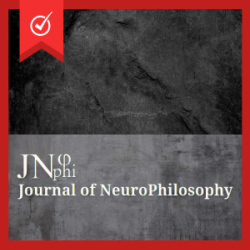The Rediscovery of the Mind (Representation and Mind) by John R. Searle
John R. Searle’s The Rediscovery of the Mind is a groundbreaking critique of dominant theories in the philosophy of mind, particularly materialist and computational approaches. As part of the Representation and Mind series, this book marks a significant departure from reductionist perspectives, advocating instead for a more holistic, biologically grounded view of consciousness.
Challenging Materialism and Functionalism
Searle begins by criticizing the prevailing materialist paradigms in philosophy and cognitive science, particularly eliminative materialism and functionalism. He argues that these views either deny the existence of consciousness altogether or attempt to explain it solely in terms of computational or neural processes, ignoring the fundamental subjectivity of experience. Searle insists that any complete theory of the mind must account for consciousness as an irreducible, first-person phenomenon.
His opposition to functionalism—the idea that mental states can be understood in terms of their functional roles, independent of the physical medium—follows naturally from his earlier work, particularly the Chinese Room Argument. He maintains that computation alone cannot produce real understanding or consciousness, as it operates purely on syntactic manipulation without intrinsic meaning.
Biological Naturalism: A Middle Ground
Rather than endorsing traditional dualism, Searle proposes an alternative called biological naturalism. According to this view, consciousness is both a biological phenomenon and irreducibly subjective. It is a feature of the brain, just as digestion is a feature of the stomach, but it cannot be fully explained through third-person descriptions alone. This stance positions Searle against both reductionist materialists and those who see consciousness as fundamentally separate from the physical world.
One of his key claims is that consciousness is causally reducible to neural processes but not ontologically reducible. This means that while consciousness depends on the physical workings of the brain, it cannot be fully described in purely physical terms without losing its essential subjective character.
Critique of Artificial Intelligence and Computational Theories of Mind
A significant portion of the book revisits and expands upon Searle’s critique of artificial intelligence, particularly strong AI—the view that a computer running the right program could achieve true consciousness. He argues that computational models of the mind confuse simulation with duplication: just as simulating a storm on a computer does not produce actual rain, simulating thought processes does not produce real understanding.
Searle also criticizes cognitive scientists for adopting what he calls the “computer metaphor” of the mind. He argues that this metaphor, while useful for modeling certain cognitive functions, is ultimately misleading because it treats mental states as mere formal symbol manipulations rather than biologically instantiated experiences.
Strengths of the Book
One of the book’s greatest strengths is its clarity and directness. Searle writes with precision, avoiding unnecessary jargon while still engaging deeply with technical debates in philosophy and cognitive science. His arguments are systematically laid out, making complex philosophical issues accessible even to non-specialists.
Additionally, The Rediscovery of the Mind serves as an important corrective to the dominant trends in cognitive science at the time, particularly the overreliance on computational explanations. Searle’s insistence on the reality of subjective experience remains a powerful counterpoint to theories that attempt to explain consciousness away.
Criticisms and Limitations
Despite its strengths, the book is not without its critics. Some argue that Searle’s biological naturalism, while compelling, does not provide a detailed explanatory framework for how exactly consciousness emerges from neural activity. His rejection of computational theories also raises questions about where, if at all, information processing fits into his model of the mind.
Additionally, some philosophers and cognitive scientists believe that Searle underestimates the potential of future AI research. While his critiques of symbolic AI are persuasive, developments in neural networks and machine learning since the book’s publication suggest that computational approaches may not be as rigidly syntax-based as he assumes.
Conclusion
The Rediscovery of the Mind is a seminal work in the philosophy of mind, offering a powerful critique of materialist and functionalist theories while proposing an alternative framework grounded in biological naturalism. Searle’s arguments remain highly influential, particularly in discussions of consciousness and artificial intelligence.
For anyone interested in the philosophy of mind, cognitive science, or the nature of consciousness, this book is an essential read. While some of Searle’s positions remain controversial, his emphasis on the irreducibility of subjective experience continues to shape contemporary debates.
Book Details:
- Title: The Rediscovery of the Mind (Representation and Mind)
- Author: John R. Searle
- Publisher: The MIT Press
- Publication Year: 1992
- Page Count: 288
- Language: English
- ISBN: 978-0262691543



